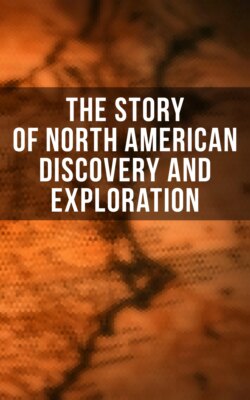Читать книгу The Story of North American Discovery and Exploration - Julius E. Olson - Страница 14
На сайте Литреса книга снята с продажи.
From Adam of Bremen’s1 Descriptio Insularum Aquilonis
ОглавлениеTable of Contents
Moreover he2 spoke of an island in that ocean3 discovered by many, which is called Vinland, for the reason that vines grow wild there, which yield the best of wine. Moreover that grain unsown4 grows there abundantly, is not a fabulous fancy, but, from the accounts of the Danes, we know to be a fact. Beyond this island, it is said, that there is no habitable land in that ocean, but all those regions which are beyond are filled with insupportable ice and boundless gloom, to which Martian thus refers: “One day’s sail beyond Thile the sea is frozen.” This was essayed not long since by that very enter prising Northmen’s prince, Harold,5 who explored the extent of the northern ocean with his ship, but was scarcely able by retreating to escape in safety from the gulf’s enormous abyss, where before his eyes the vanishing bounds of earth were hidden in gloom.
1 Adam of Bremen was a prebendary and writer on ecclesiastical history. The Descriptio Insularum Aquilonis is an appendix to his Gesta Hammaburgensis Ecclesiae Pontificum. For the preparation of his work on the “Northern Islands,” Adam spent some time at the Danish court, where he obtained much information from the king, Svend Estridson (1047-1076), an unusually well informed monarch. Adam’s work was undoubtedly completed before the king’s death, which occurred in 1076. The Descriptio was first printed in Lindenbrog’s edition of Adam’s work, published in 1595, which thus contains the first printed allusions to Vinland. Rafn gives a facsimile of one of the manuscripts, for part of the passage.
2 Svend Estridson, king of Denmark.
3 Immediately before this extract, the author describes the islands in the northern seas — among them Iceland — and then proceeds to speak of newer lands “deeper in the ocean,” first of all Greenland, “far up towards the Swedish or Riphaean mountains,” distant five or seven days’ sailing from Norway, then Halagland, somewhat nearer, where the sun is above the horizon fourteen days in summer, and lastly Vinland. That is, according to Adam, Vinland was in a northern region.
4 The reference to the “unsown grain,” and vines in the preceding sentence, are sufficiently characteristic to have enabled any one familiar with the “Saga of Eric the Red” to identify the new land as Vinland, even though it had not been named. It is interesting to note that the reference to “unsown grain” does not appear in the Flat Island Book saga.
5 Evidently a reference to Harold the Stern-ruler (Haardraade). He was a contemporary of Svend Estridson, and ruler in Norway from 1047 to 1066. The saga of Harold Haardraade in Snorri Sturlason’s “Saga of the Kings of Norway” contains no reference to any such expedition. Yet it would be quite in keeping with the other adventures of this much-travelled king to have undertaken such an expedition. It is to be noted that he did not, according to Adam, go in search of Vinland.
